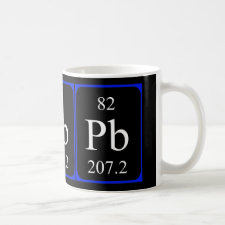
Authors: Msaadi R, Ammar S, Chehimi MM, Yagci Y
Article Title: Diazonium-based ion-imprinted polymer/clay nanocomposite for the selective extraction of lead (II) ions in aqueous media.
Publication date: 2017
Journal: European Polymer Journal
Volume: 89
Page numbers: 367-380.
DOI: 10.1016/j.eurpolymj.2017.02.029
Alternative URL: http://www.sciencedirect.com/science/article/pii/S0014305716315282
Abstract: Ion imprinted polymer/montmorillonite clay nanocomposite (MMT/IIP) was prepared by the combination of diazonium salt chemistry and photopolymerization process, and used for the selective removal of Pb(II). Toward this end, clay was ion exchanged with dimethylaminobenzenediazonium (DMA) to facilitate incorporation of hydrogen donating sites to the aluminosilicate layers. Upon irradiation of the mixture of the intercalated clay, acrylamide, bisacrylamide and Pb(II)-dithizone complex in the presence of benzophenone in DMSO, the copolymerization initiated by the free radicals formed by the hydrogen abstraction of photoexcited benzophenone from the dimethylamino groups of the intercalated clay. The resulting ion imprinted network nanocomposite and the precursors pristine and diazonium cation intercalated clays were thoroughly characterized by detailed FT-IR, XPS, XRD and SEM. Particularly, XRD analysis brought strong supporting evidence for high exfoliation of the clay upon photopolymerization, whereas XPS permitted to demonstrate that the final nanocomposite has polyacrylamide-rich surface. The adsorption and recognition properties of MMT/IIP for Pb(II) were evaluated using atomic absorption technique. The adsorption capacity was found to be as high as 301 mg/g after about 30 min contact time, and the relative selectivity coefficients to Zn2+ and Fe3+ were 9.2 and 93, respectively. Compared with non-imprinted clay/polymer nanocomposites, the MMT/IIP exhibited much higher affinity for Pb(II) therefore stressing the importance of the artificial receptor sites within the nanocomposite. Altogether, the results are consistent with an MMT/IIP nanocomposite that is specific to lead II. This work demonstrates for the first time the potential of aryldiazonium chemistry combined with photopolymerization for the fabrication of high performance clay/ion imprinted nanocomposites for the removal of toxic heavy metals
Template and target information: lead ion, Pb(II)
Author keywords: clay, Diazonium, photopolymerization, Ion-imprinted polymer, Heavy metal ions, lead, adsorption



Join the Society for Molecular Imprinting

New items RSS feed
Sign-up for e-mail updates:
Choose between receiving an occasional newsletter or more frequent e-mail alerts.
Click here to go to the sign-up page.
Is your name elemental or peptidic? Enter your name and find out by clicking either of the buttons below!
Other products you may like:
 MIPdatabase
MIPdatabase









